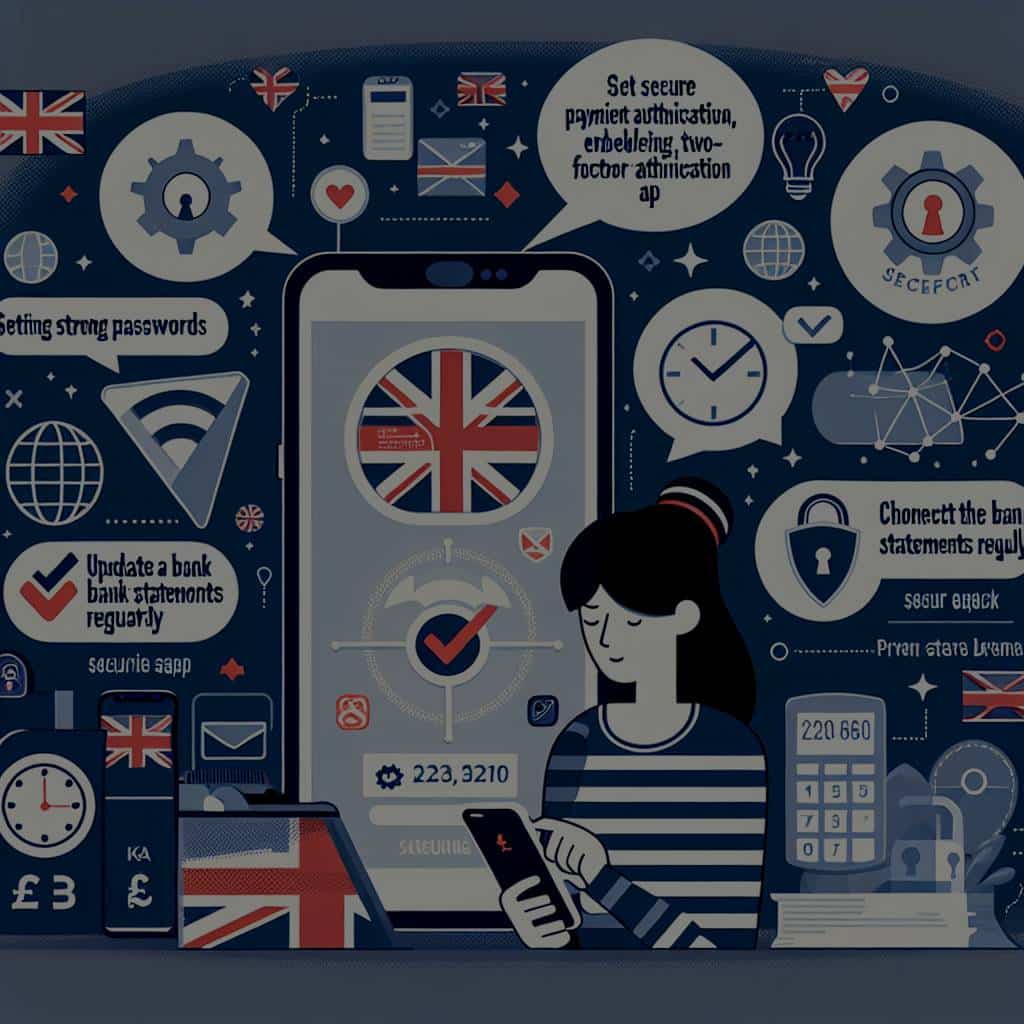With the advent of digital transformation, mobile payments have become a fundamental aspect of everyday life. Indeed, myriad businesses are shifting towards a cashless model, with the convenience and immediacy of digital transactions becoming an expectation rather than an exception. However, with this growing ubiquity of mobile payments, there’s a pressing need for a strong emphasis on security. This article aims to explore the best practices for mobile payment security, specifically tailored for UK consumers.
Understanding the Risks and Threats in Mobile Payments
Before diving into best practices for mobile payment security, it’s essential to understand the possible risks and threats in the landscape of mobile payments. As you continue to rely on digital financial transactions, your exposure to potential data breaches, fraud, and cybercrime increases. This section will delve into these risks, providing insight into why mobile payment security is crucial.
Also read : How to Build a Cybersecurity Awareness Program in Your UK Business?
There is a wide array of risks associated with mobile payments. These include but are not limited to loss or theft of devices, insecure Wi-Fi networks, malware, phishing scams, and even social engineering. The issue of data privacy also looms large, with users’ financial data and personal information often being at stake.
The consequences of such threats can be dire. From financial losses to damage to personal reputation and creditworthiness, the aftermath of a security breach can be tough to handle. In some cases, it might also lead to businesses losing their customers’ trust, which can be detrimental in the long term.
In the same genre : What Are the Impacts of Brexit on UK Pharmaceutical R&D?
Ensuring Secure Transactions: The Role of Financial Institutions and Businesses
Financial institutions and businesses are the central actors in ensuring the security of mobile payments. They are responsible for implementing robust security measures, educating customers, and maintaining trust in the payment ecosystem. Let’s delve into the key roles they play in securing mobile transactions.
Financial institutions and businesses should invest in advanced security technologies. This includes using biometric authentication, encryption, tokenisation, and secure access controls. Moreover, they should continuously monitor and detect unusual activities to prevent fraudulent transactions.
Proactive communication with customers is also vital. Businesses should provide clear instructions on secure payment practices and notify customers of any potential security issues. They should also have mechanisms in place for customers to report suspicious activities promptly.
Apps also play a vital role in maintaining security. Ensuring that the app used for mobile payments is genuine and regularly updated can go a long way in safeguarding against fraudulent transactions.
Empowering Customers: User Responsibilities in Mobile Payment Security
While financial institutions and businesses play a central role in securing mobile payments, the responsibility is not solely theirs. As a user, you also have to do your part in ensuring the security of your transactions. This section will outline the best practices for UK consumers.
Firstly, always protect your mobile device. Use strong, unique passwords and enable biometric authentication if possible. Do not share your passwords with anyone and regularly update them.
You should ensure that you are using secure Wi-Fi networks when conducting mobile payments. Public Wi-Fi networks are often insecure and can put your sensitive data at risk.
It’s also advisable to regularly update your mobile payment apps. Outdated apps may not have the latest security patches, making them vulnerable to attacks. Also, only download apps from trusted sources to avoid falling victim to malware.
The Future of Mobile Payments: Incorporating Digital Wallets and Mobile Payment Apps
The future of mobile payments is expected to see an increase in the use of digital wallets and mobile payment apps. These digital tools offer convenience and increased security, but they also come with their own set of risks. This section will provide you with insights into these emerging trends and how you can stay secure while using them.
Digital wallets and mobile payment apps often come with advanced security features like biometric authentication and tokenisation. These features provide an additional layer of security, making it more difficult for fraudsters to gain access to your financial information. However, you should still exercise caution when using these tools.
Make sure to only use digital wallets and mobile payment apps from trusted sources. Always check the app’s privacy policies and terms of use to ensure your data is being handled responsibly. Additionally, keep your apps updated and monitor your bank statements regularly for any suspicious activity.
Adopting a Multi-Layered Approach to Mobile Payment Security
Securing mobile payments is not a one-off event, but a continuous process that requires a multi-layered approach. This involves implementing robust security solutions, educating users, and adopting secure payment practices. This section will explore this multi-layered approach and provide tips on how you can adopt it.
A multi-layered approach to mobile payment security involves combining multiple security measures to provide a comprehensive shield against threats. This can include using biometrics, encryption, secure Wi-Fi networks, strong passwords, and secure mobile payment apps.
You also need to stay educated about the latest threats and security measures. Regularly update your knowledge about mobile payment security and educate others around you. This can go a long way in ensuring the overall security of the payment ecosystem.
Lastly, always be vigilant. Monitor your bank statements regularly for any suspicious activity, and report any anomalies immediately. With a proactive attitude, you can significantly reduce the risk of falling victim to mobile payment fraud.
Exploring Alternate Mobile Payment Methods: Contactless Payments and Beyond
Over time, mobile payments have evolved, giving rise to various payment methods such as contactless payments, online payment platforms, and the use of digital wallets like Apple Pay. The popularity of these payment methods is growing, primarily due to their convenience and speed. But do these payment methods offer the same level of security? Are there specific security measures to consider while using them? Let’s explore.
Contactless payments, made either through a mobile device or a credit card, are often subject to a spending limit per transaction in the UK, offering a layer of protection against fraudulent activities. However, if your card or mobile device is lost or stolen, it becomes vulnerable until you report the loss and get it blocked.
Online payment platforms, often used by small businesses, are subject to PCI DSS (Payment Card Industry Data Security Standard), a set of security standards designed to ensure that all companies that accept, process, store, or transmit credit card information maintain a secure environment. As a user, making sure the platform you use adheres to these standards can provide an added layer of trust.
Digital wallets, like Apple Pay, typically require biometric or passcode authentication for transactions, making them less prone to theft. However, it’s essential to ensure your mobile device is secure, as it holds sensitive data. Always use trusted and secure networks while using your mobile wallets.
In essence, while these alternate mobile payment methods offer convenience, they come with their own set of risks. The key lies in using these methods responsibly and being aware of the best practices for securing each type of transaction.
Conclusion: Remaining Vigilant for Secure Mobile Payments
Mobile payment security is a shared responsibility between financial institutions, small businesses, and consumers. While institutions can provide robust security measures, consumers must also play an active role in securing their transactions. Understanding the risks, following best practices, and remaining vigilant is crucial.
Keep your mobile devices secure, update your apps regularly, and ensure the use of secure networks while making transactions. Remember, when it comes to payment security, your habits and practices are as important as the technologies you use.
The future of mobile payments offers exciting possibilities with digital wallets and contactless payments. However, these advancements also bring new security challenges. Staying informed about the latest trends, understanding their security aspects, and adopting secure practices will go a long way in ensuring a safe mobile payment environment.
Remember, the goal is not just to adopt mobile payments, but to do so securely. After all, the convenience of mobile payments should not come at the cost of your financial security. Be informed, be prepared, and stay secure.






